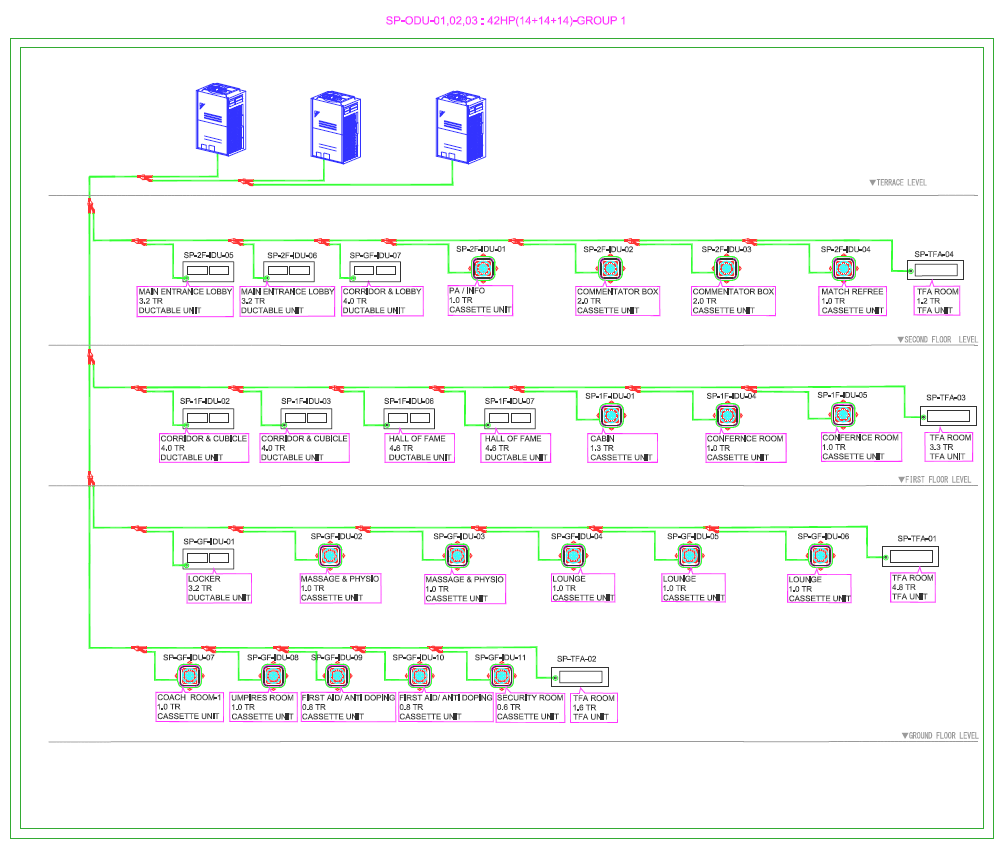Hello everyone,
In DesignBuilder, when modeling multiple VRF outdoor units (ODUs) serving the same VRF zone group, the software requires summing their capacities into a single equivalent ODU. However:
How are part-load efficiencies accounted for if the ODUs have different capacities and performance curves?
Since VRF systems operate at varying loads, do the combined efficiency curves (COP, EER, IPLV) adjust based on the mix of ODUs?
Or does the simulation assume a single averaged efficiency curve?
Is there a way to explicitly define multiple ODUs (with different sizes and performance data) rather than combining them into one?
If not, what is the recommended approach for ensuring accurate efficiency modeling?
Does EnergyPlus (after IDF export) allow more detailed VRF ODU configurations?
Or does it also follow the same "summed capacity" simplification?
This is important for accurately simulating real-world systems where multiple ODUs of different sizes serve the same zones (e.g., a mix of 10HP and 15HP units).
Thank you for your guidance!





